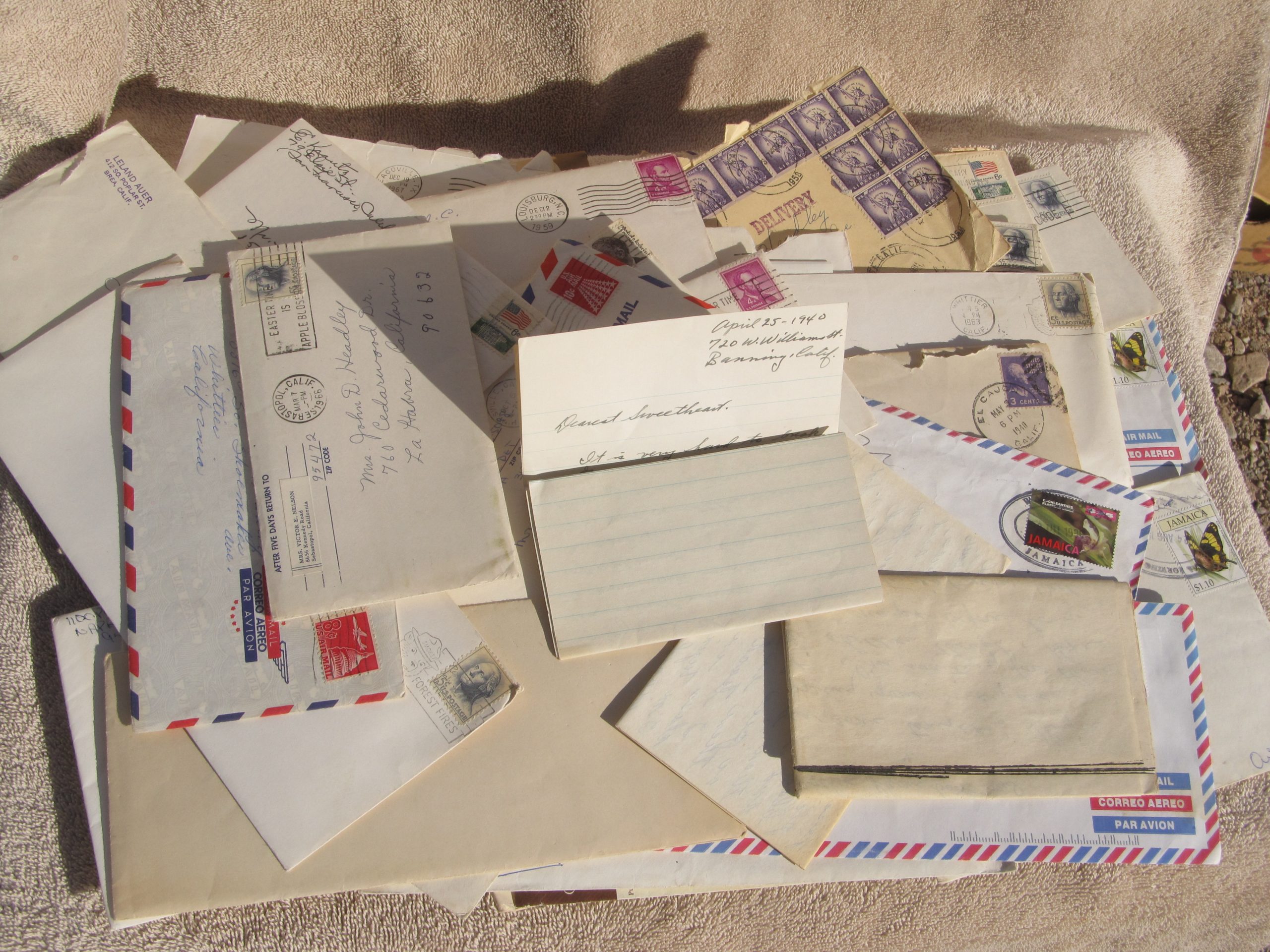Despite the decline in written correspondence, we still find letters compelling. The account ‘@LettersOfNote’ has 607.7k followers on X, formerly Twitter, and 184k on Instagram. We are drawn to the witty, frank, or heartbreaking snapshots of life that letters provide. Popular posts include Charles Darwin writing to geologist Charles Lyell in 1861 – “I am very poorly today & very stupid & hate everybody & everything.” There is comfort in knowing the timelessness of this sentiment. There’s the beautiful expressions of American poet’s Robert Lowell and Elizabeth Bishop friendship in Lowell’s 1967 letter – “Every so often, I have a vague acute feeling of missing something or someone, and it’s you.” There’s something to be found even in the sign offs, such as in a RVSP from the author E.B. White – “Thanks for your letter inviting me to join the committee of the Arts and Sciences for Eisenhower. I must decline, for secret reasons.” @LettersOfNote has curated an online space for letters from the archives.
@LettersOfNote curator, Shaun Usher, has also created Letters Live; live events where a variety of performers such as Olivia Colman, Benedict Cumberbatch, and Taika Waititi read aloud an array of letters. Novelist Elif Shafak has said of the events: “with nothing more than the power of words, and the beauty of human voice, Letters Live will blow your mind and touch your soul.” Usher realised the power of letter writing after keeping in touch with his girlfriend after she moved to Spain for a year, saying “for some reason, we decided to keep in touch mainly by letter. The result was that we fell in love through handwritten correspondence.”
Literary letters can have a biographical purpose, we can learn so much about the interior lives of authors through their written correspondence. A Life in Letters by George Orwell reveals the practicalities of his communications. His letters are rarely literary or poetic, he is more concerned with confirming dates for summer holidays and the success of his garden – “I am growing, among other things, a pumpkin, which of course needs much more careful treatment than a marrow.” We are privy to his choice of pseudonym in an early letter. He asks, “What about Kenneth Miles” or “George Orwell…I would rather favour George Orwell.” There are deliberations about the title of his first book Down and Out in Paris and London, he suggests the alternative “The Confessions of Dishwasher.” “I would rather answer to ‘dishwasher’ than ‘down and out’, but if you and Mr Gollancz think the present title best for selling purposes, then it is better to stick to it.” However, the dominant theme of his letters is not the behind the scenes of creating an impressive body of literary work, instead his correspondence uncomplainingly tracks his experience of ill-health and raising a toddler in postwar Britain. The intimacy of letters means really A Life in Letters is a look into the private life of Eric Blair the man, rather than George Orwell, the public figure.
Epistolary novels demonstrate the useful function letters can serve in terms of narrative. Although slightly tainted by being introduced to them in secondary school, Bram Stoker’s Dracula and Scottish author Robert Louis Stevenson’s Strange Case of Dr Jekyll and Mr Hyde are examples of highly successful epistolary novels. A narrative built out of correspondence equalises the characters, we are eager to hear from all perspectives. The realism of dated letters helps propel novels with gothic and fantastical plots. Sally Rooney offers a modern alternative to the epistolary novel. Her book Beautiful World, Where Are You is interspersed with emails between two friends, Alice and Eileen. The epistolary element of Beautiful World, Where Are You allows the characters to explore their romantic lives but also their thoughts on electoral politics, current affairs, and climate change. Rooney affords her characters an interiority that is both personal and political.
Where collections of letters really come into their own though, I think, is not in epistolary novels or the collected letters of public figures but letters written by regular people that demonstrate the heartwarming mundanity of life. 84, Charing Cross Road by Helene Hanff is a book about the twenty-year correspondence between Helene Hanff, American writer, and Frank Doel, a British bookseller for Marks & Co, a bookshop at the eponymous address in London. This collection of sweet letters follows the development of a long-distance friendship as they exchanged books, food parcels, and shared a love of words. It’s not action-packed, there’s a charm in the everyday aspects of these letters. Similarly, Love, Nina by Nina Stibbe is a collection of letters to her sister over a five-year period where she worked as nanny for the former editor of The London Review of Books, Mary-Kay Wilmers. She was plunged into the literary world of 1980s North London, with regular features from Alan Bennett (referred to as AB in the book), Claire Tomalin, Stephen Frears, and Michael Frayn. Stibbe captures the fleeting jokes of family-life with an attuned ear for dialogue. She transcribes snippets of conversations, and the cast of the book is built up with these mini portraits. The staccato pace of letters allows you to dip in and out, making them the perfect books for when life feels busy.
“A nice lot of vintage handwritten letters from the mid- 1900’s for sale: http://r.ebay.com/IC4eUg” by AdventuresWithRocks, Outdoor Stuff & More is licensed under CC BY-NC-ND 2.0

